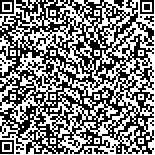| 本文已被:浏览 2179次 下载 1861次 |

码上扫一扫! |
| 热习服对大鼠血液代谢产物影响的研究 |
| 梁涵1,康争春2,李玉祥1,3,常文军1,任浩4,陈新民1,朱江波1,马文领1* |
|
|
| (第二军医大学热带医学与公共卫生学系环境卫生教研室, 上海 200433;第二军医大学长海医院胃肠外科, 上海 200433;第二军医大学热带医学与公共卫生学系生物防御教研室, 上海市医学生物防护重点实验室, 上海 200433) |
|
| 摘要: |
| 目的 探讨大鼠经热习服及后续热环境运动刺激后血浆中代谢产物的变化特征,筛选热习服特异性的指示标志物。方法 将16只SD大鼠随机分为热习服组和对照组(n=8),热习服组大鼠经每日2 h热习服训练,对照组大鼠不做相应处理,连续14 d,结束后次日采集两组大鼠眼眶血。休息4 d后所有大鼠均经热环境运动刺激30 min,麻醉后取腹主动脉血并离心取血浆。使用Bruker 600 MHz核磁共振谱仪检测两组大鼠血浆中代谢产物的1HNMR谱,分析热习服及热环境运动刺激后大鼠血浆代谢产物的变化。结果 与对照组相比,热习服组大鼠在热习服后血浆中不饱和脂肪酸、谷氨酸、脂质和二甲胺的含量升高,而葡萄糖、肌醇、牛磺酸、苏氨酸和三甲胺氧化物含量均下降(P<0.05);而在热环境运动刺激后,热习服组大鼠血浆中三甲胺氧化物、谷氨酸和脂质的含量均下降(P<0.05)。结论 经热习服和热环境运动刺激后,大鼠血浆中代谢物质发生了明显变化。三甲胺氧化物有可能作为热习服的指示性标志物,为制定热习服客观评价体系提供有意义的线索。 |
| 关键词: 热习服 代谢 生物分子核磁共振 三甲胺氧化物 |
| DOI:10.16781/j.0258-879x.2016.09.1057 |
| 投稿时间:2016-06-22修订日期:2016-08-01 |
| 基金项目:军队后勤科研重点项目(BWS14J-023),军队“十二五”重大专项(AWS12J002-05-02),军队医学技术青年培育项目(15QNP055). |
|
| Effect of heat acclimation on metabolites in rat blood |
| LIANG Han1,KANG Zheng-chun2,LI Yu-xiang1,3,CHANG Wen-jun1,REN Hao4,CHEN Xin-min1,ZHU Jiang-bo1,MA Wen-ling1* |
| (Department of Environment Health, Faculty of Tropical Medicine and Public Health, Second Military Medical University, Shanghai 200433, China;Department of Gastrointestinal Surgery, Changhai Hospital, Second Military Medical University, Shanghai 200433, China;Department of Biological Defense(Microbiology), Shanghai Key Laboratory of Medical Biodefence, Faculty of Tropical Medicine and Public Health, Second Military Medical University, Shanghai 200433, China) |
| Abstract: |
| Objective To observe the changes of plasma metabolites in rats after heat acclimation and following exercise stimulation, so as to screen the specific marker of heat acclimation. Methods A total of 16 SD rats were randomly divided into control and heat acclimation groups (n=8); rats in the heat acclimation group received 2 hour training a day and those in the control group received no training. After 14 days of heat acclimation, rat orbital blood was collected from control and heat acclimation groups. After a rest for 4 days, rat arterial blood samples were collected under anesthesia after exercising in a thermal environment for 30 min in both groups. The changes of metabolites in the plasmas from control and heat acclimation groups were examined by the nuclear magnetic resonance (NMR)using Bruker 600 MHz, and the changes of plasma metabolites were analyzed after heat acclimation and stimulation with exercise in thermal environment in rats. Results Compared with control group,the heat acclimation group had significantly increased plasma unsaturated lipid, glutamate, lipid and dimethylamine(P<0.05),and significantly decreased glucose, myo-inositol, taurine, threonine and trimethylamine N-oxide (TMAO)(P<0.05). After heat stimulation with exercise in thermal environment the plasma TMAO, glutamate and lipid were significantly decreased in the heat acclimation group (P<0.05). Conclusion After heat acclimation and exercise stimulation in thermal environment, plasma metabolites undergo great changes in rats. TMAO may serve as a marker of heat acclimation, which provide evidence for establishing evaluation system for heat acclimation. |
| Key words: heat acclimation metabolism biomolecullar nuclear magnetic resonance trimetylamine oxide |
.jpg)
.jpg)